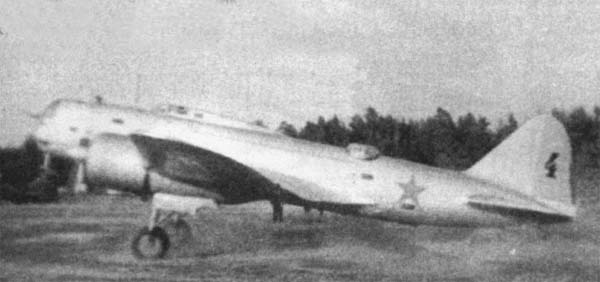
While much has been written about Germany’s swift and convincing victories over Red Army defenses in the Summer of 1941, Soviet victories during this period, however ostensibly small they may be, are often overlooked by historians. With the exception of several defensive battles that became symbols of Soviet resistance in the early months of the Great Patriotic War (Brest Fortess, Smolensk, etc.), little is known in the West about many of the psychological victories by the USSR over Germany following Operation Barbarossa, such as the bombing of Berlin. While Americans consider the Doolittle Raid to be one of the great victories over the Japanese during World War Two (despite negligible physical damage), the VVS undertook a similar, yet relatively unknown, so-called “morale-raid” on Berlin just two months after the Nazi invasion.
On July 21st, less than a month after the start of Operation Barbarossa, 127 German aircraft bombed Moscow, the capital of the Soviet Union. The raid inflicted negligible damage, though it did underscore the USSR’s inability to defend even its largest city. The Kremlin immediately sought to plan a retaliatory strike, but given the outdated state of the VVS in 1941, no Soviet aircraft had the range to strike Berlin from the airfields around Leningrad. Military strategists at first began to plan a strike against Pillau, where the German fleet was stationed. Stalin, however, ordered that a plan be drawn up to bomb Berlin.
In July-August of 1941, the Wehrmacht made significant advances daily, and the Soviet military was throwing everything it had at halting Army Group North’s drive on Leningrad. The Soviet Naval Staff, after calculating several scenarios, determined that the only chance of success lay in launching Ilyushin DB-3T torpedo bombers from a small island of the coast of Estonia. Strategists determined that if the twin engine bombers were loaded with 3,000 kg of fuel and not more than 750 kg of bombs, the aircraft would be able to make the 1800 km round trip journey to Berlin, with some 10-15% of reserve fuel to spare. As pilots would not have the extra fuel needed to perform evasive maneuvers when encountering German defenses (both anti-aircraft fire and fighter planes), the only option was to fly at high altitudes in a straight line both directions, thus significantly reducing the accuracy of the bombardments. Tactical bombing, however, was not the point of the raid on Berlin.
On August 2nd, fully loaded Soviet DB-3T bombers took off from the make shift airfield to test if using such an airstrip were even possible. The test showed that skilled pilots could indeed take off in such conditions. Two days later, on the night of August 4th, five Soviet aircraft made a reconnaissance flight over Berlin, taking off from the island airstrip. The Germans had set up a 100 km anti-aircraft perimeter around the German capital with spotlight efficiency up to 6,000 cubic meters. The planes successfully flew over Berlin without being detected. The Soviet pilots were ready to bomb Berlin.
On the evening of August 7th, 1941, 15 Ilyushin DB-3T torpedo bombers of the Baltic Fleet took off from the island off the coast of Estonia and headed straight for the German capital. Soviet fighters lacked the range to serve as escorts, so altitude was the bombers’ only protection.
The German military, however, did not expect such a mission to come from the Soviet Union, despite the fact that Berliners had been subjected to British bombing since the previous August, though on a small scale. Nevertheless, Nazi propaganda assured German citizens that there was no danger whatsoever from the East, saying that the Soviet Air Force had been destroyed as a result of Operation Barbarossa. Indeed, the notion of a Soviet bombing run on Berlin in the Summer of 1941 seemed almost impossible to the German military brass and Nazi leadership.
Berliners at that time were not subjected to blackouts, and the streets of the city were lit up by the glow of apartment windows and street lights. RAF raids on the German capital were rare, and the city’s illumination on the clear night of August 7th led the Soviet bombers directly to the center of Berlin. The Ilyushins approached their targets quietly from an altitude of 7,000 meters. There was no sign of anti-aircraft fire. The search lights were switched off. The bomb bay doors slid open, and more than 11,000 kg of bombs fell through the night sky onto the center of Berlin.
The aircraft, significantly lighter after dropping their loads, swung around and high tailed it back to Estonia. The still night sky at 7,000 meters was abruptly interrupted by the explosions of anti-aircraft shells. Nevertheless, the Soviet bombers returned unscathed, and their mission had been completed.
The German propaganda machine initially claimed that the raid had been carried out by the British, reporting that six RAF planes had been shot down. Newspapers in the UK immediately refuted the claims, and the German government begrudgingly acknowledged that it was in fact Soviet aircraft that had attacked Berlin.
While no significant damage had been inflicted on the German capital, the Kremlin heralded the bombing run as a significant victory over the enemy, much as the US would do the following year after the Doolittle Raid on Tokyo. In both cases, the effect had a tremendous impact on the population who had experienced only defeat by Axis powers up until those points.
The Soviet Union would continue to carry out bombing missions against Berlin, but the German defenses were always henceforth prepared for the VVS bombers. Soviet military strategists eventually decided to focus VVS aircraft on providing close air support for Red Army ground forces, which had a pivotal effect on all the major Soviet operations through the end of the war.
Pingback: The forgotten Soviet bomber: The Ilyushin Il-4 | vvs air war